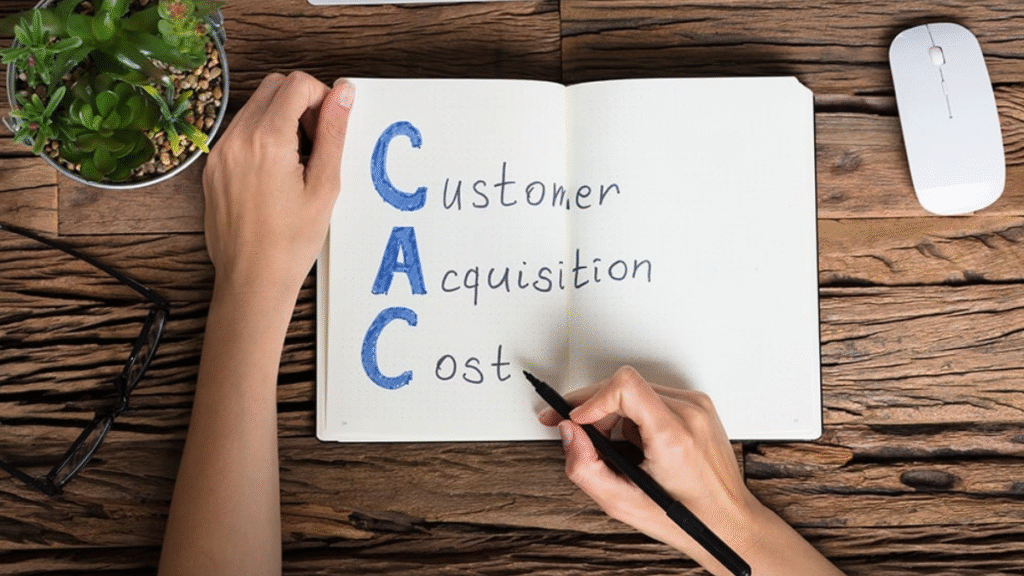In today’s fast-evolving digital landscape, marketing professionals and business owners alike are under increasing pressure to prove the value of their campaigns. As we step into 2025, ROI in digital marketing is more critical than ever. This guide offers a comprehensive look at how to understand, measure, and improve ROI across various digital marketing channels.
What is ROI in Digital Marketing?
ROI (Return on Investment) in digital marketing measures the profit generated from your marketing campaigns relative to their cost. It’s a key metric to determine how effectively your marketing efforts are contributing to business growth.
ROI Formula:
ROI (%) = (Net Profit / Marketing Cost) x 100
This formula helps you assess whether your campaigns are generating more revenue than they’re costing you.
Why ROI Matters in 2025
1. Data-Driven Decision Making
With the rise of AI and machine learning, businesses have access to more data than ever. ROI helps cut through the noise and focus on what’s truly working.
2. Budget Optimization
Knowing which campaigns deliver the highest ROI allows marketers to allocate budgets more effectively.
3. Executive Buy-In
Clear ROI figures justify marketing investments and facilitate communication with stakeholders.
4. Competitive Edge
Brands that consistently monitor and improve ROI outperform those operating blindly.
Key Metrics That Impact ROI
1. Customer Acquisition Cost (CAC)

Total spend to acquire a new customer.
2. Customer Lifetime Value (CLTV or LTV)
Total revenue a business expects from a single customer over their relationship.
3. Conversion Rate
The percentage of visitors who take a desired action (purchase, sign-up, etc.).
4. Click-Through Rate (CTR)
How often users click on your ad or link compared to how often they see it.
5. Cost Per Click (CPC) or Cost Per Mille (CPM)
Useful for paid campaigns to determine how much each click or 1,000 impressions cost.
Channels and ROI Benchmarks in 2025
1. SEO (Search Engine Optimization)
- High ROI over the long term
- Low ongoing costs after setup
- ROI can take months to materialize
2. PPC (Pay-Per-Click Advertising)
- Immediate traffic
- Costly if not optimized
- ROI depends on keywords, ad quality, and landing pages
3. Social Media Marketing
- Organic posts build brand loyalty
- Paid campaigns can be hit or miss
- ROI improves with audience targeting and personalization
4. Email Marketing
- One of the highest ROI channels
- Personalized automation increases returns
- Must focus on list hygiene and segmentation
5. Influencer Marketing
- ROI varies by niche and influencer authenticity
- Nano and micro-influencers often yield better ROI
6. Content Marketing
- Builds long-term value
- Requires consistent effort
- SEO-optimized, evergreen content delivers higher ROI
7. Affiliate Marketing
- Performance-based
- Easy to track and measure
- ROI depends on commission structure and affiliate quality
Tools for Measuring Digital Marketing ROI
1. Google Analytics 4
Tracks user behavior, conversion paths, and source attribution.
2. HubSpot
Combines CRM, email, and campaign tracking with built-in ROI tools.
3. SEMrush/ Ahrefs
Measure SEO effectiveness and track keyword ROI.
4. Meta Business Suite
ROI tracking across Facebook and Instagram ads.
5. Google Ads
Provides CPC, CTR, conversion, and ROI metrics for all campaigns.
How to Improve ROI in 2025
Step 1: Set SMART Goals
Specific, Measurable, Achievable, Relevant, Time-bound goals help measure ROI effectively.
Step 2: Define Clear KPIs
Use KPIs that align with each stage of the funnel.
Step 3: Track the Right Metrics
Focus on metrics that tie directly to revenue (e.g., LTV, CAC, conversion rate).
Step 4: Use Attribution Models
Adopt models like last-click, first-click, linear, or data-driven attribution to track touchpoints.
Step 5: Automate Campaigns
Use AI tools for optimization, A/B testing, and audience segmentation.
Step 6: Regularly Optimize Content and Ads
Review ad creatives, keyword bids, email subject lines, and landing pages frequently.
Attribution Models and ROI Accuracy
First-Touch Attribution
Gives credit to the first interaction.
Last-Touch Attribution
Credits the final touch before conversion.
Linear Attribution
Distributes credit evenly across all touchpoints.
Time-Decay Attribution

Gives more weight to recent interactions.
Data-Driven Attribution (Recommended in 2025)
AI-powered model that assigns value based on actual performance data.
Common Mistakes That Hurt ROI
- Not tracking conversions properly
- Focusing on vanity metrics (likes, impressions)
- Ignoring customer retention
- Misaligned targeting or messaging
- Not optimizing based on performance data
ROI in B2B vs. B2C Digital Marketing
B2B:
- Longer sales cycle
- Emphasis on lead nurturing and content marketing
- Higher LTV, lower conversion rates
B2C:
- Shorter decision time
- Focus on emotional triggers and quick CTAs
- Higher conversion volume, lower LTV per customer
Budget Allocation Based on ROI
In 2025, marketers use AI to allocate budgets dynamically. Channels with high ROI automatically get increased spending.
Pro Tip:
Use performance dashboards that auto-update to track ROI across campaigns in real-time.
Real-World Example
Brand A implemented AI-based attribution modeling and adjusted their PPC strategy based on ROI insights. Within three months, they:
- Reduced CAC by 20%
- Increased LTV by 18%
- Boosted overall campaign ROI by 35%
Also Read: The Ultimate Guide To Social Media Marketing In 2025
Conclusion
ROI is more than just a number—it’s a powerful tool for guiding your digital marketing strategy in 2025. By understanding what drives ROI, tracking the right metrics, using advanced attribution models, and consistently optimizing campaigns, you can maximize your return and justify every dollar spent. Digital marketing success in 2025 depends not only on creativity but also on measurement and data-driven decision-making.
FAQs
1. What is a good ROI in digital marketing?
A good ROI depends on industry, but a 5:1 revenue-to-cost ratio is often considered strong.
2. How do I calculate ROI on a multi-channel campaign?
Use data-driven attribution tools to assign value across channels and calculate net profit relative to total cost.
3. Which digital marketing channel has the highest ROI?
Email marketing traditionally offers the highest ROI when executed with proper segmentation and personalization.
4. What’s the difference between ROI and ROAS?
ROI considers profit relative to total cost, while ROAS (Return on Ad Spend) only considers revenue generated from ad spend.
5. Can AI improve ROI in digital marketing?
Yes. AI helps with optimization, personalization, audience targeting, and dynamic budget allocation—all of which boost ROI.


